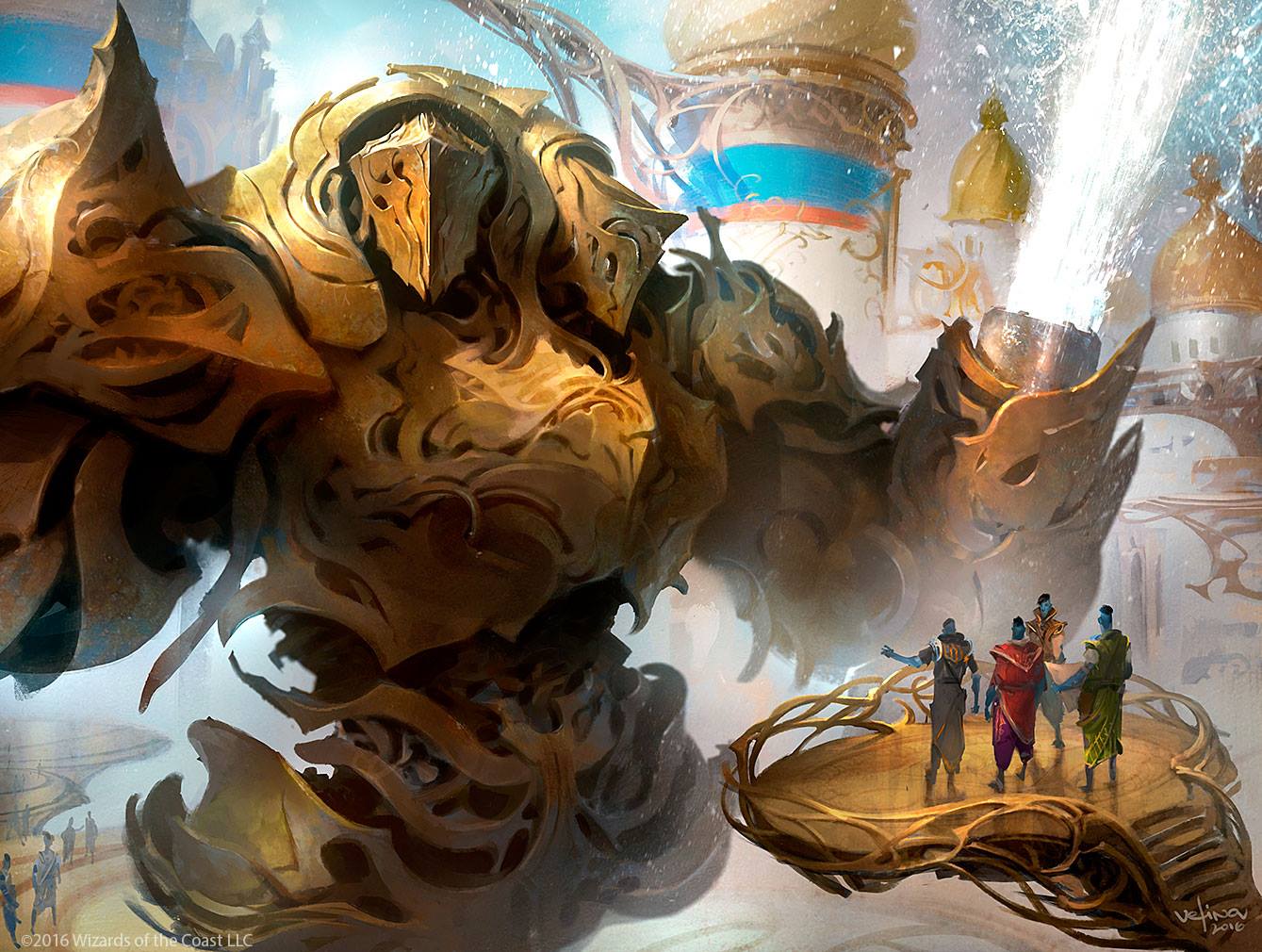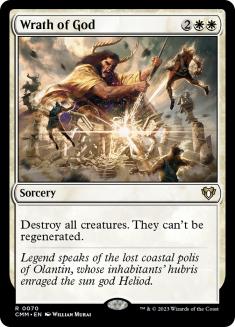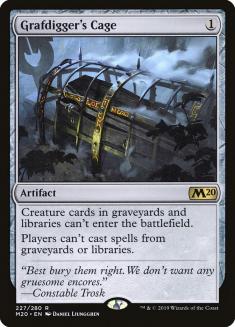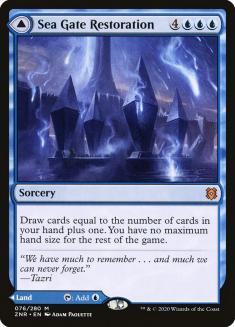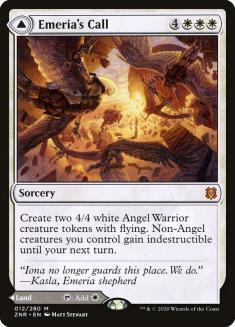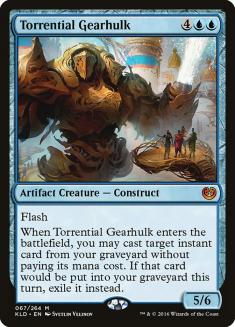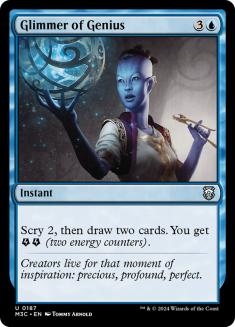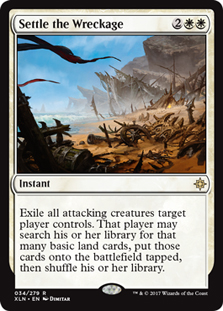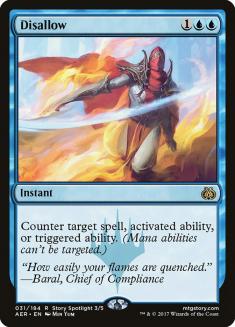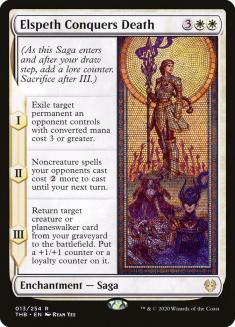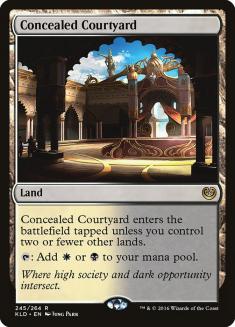Control in Historic has had its ups and downs. At the beginning, there was little hope for those wanting to stop the ramp and aggro decks from running wild. Creatures were too good, especially Goblins, and the cards that were previously banned in Standard were alive and well in Historic. This created a nightmare scenario for control decks, having to answer the fastest onslaught of monsters early from one flank while defending the grindiest accumulation of value from the other. Control decks are at their weakest when both ends of the metagame spectrum are at such a high level of power.
Control decks thrive when the concentration of power is more in the center. When midrange decks are viable, it typically means the ramp decks of the format have dropped down a few notches, making control a powerful choice. Even if aggro is very strong, the removal spells used to handle midrange creatures can also take down Goblin Guide. The true mark of a healthy format is when decks are not forced to run maindeck Aether Gust and the spells that they use can be effective against most opponents they face throughout a tournament. Historic is in a better place than it has been in the past, but there’s always room for improvement.
I was very excited about Remastered sets when they were few announced. Magic Online has not been an exciting program for me since the release of Magic Arena. Since I needed my Modern and Pioneer fill, I still accessed the older program out of necessity, but my recreational platform has been the newer model. Standard and Limited were usually enough to satiate my competitive needs but having the ability to cast Wrath of God and Teferi, Hero of Dominaria together again has made Historic my guilty pleasure format. I know the current combination of control spells are not enough to take home trophies; however, it is close.
Planeswalkers (11)
Lands (25)
Spells (24)

This version of Azorius Control is something I have championed since day one. Once Pact of Negation and Gideon of the Trials entered Historic, I knew that control had a chance. Traditional control synergies have not worked the best in this format prior because of the gap in power level between it, and the faster options. We needed a way to stop decks dead in their tracks, especially when we tap out to gain advantage on the battlefield. Pact of Negation has been the leader on that role and a big reason why Azorius Control lands in the Top 8 of large-scale events while being an underdog on paper.
There’s nothing revolutionary about this take on Azorius Control when looking back on my older builds. Rest in Peace and Grafdigger’s Cage were the must-haves in Historic with the graveyard being a huge source of value for most of the competitive decks out there. It’s tough to push through hand disruption and the combo with just counterspells, which is why a permanent like Grafdigger’s Cage is so important. I did not have these types of cards in the maindeck; however, my sideboarded games were filled with them.
The rest of the deck looks identical to mine. The use of Baffling End over Seal Away, two copies of The Birth of Meletis, two copies of Censor, Syncopate, Search for Azcanta, maximum copies of Wrath of God, and the same planeswalkers put a smile on my face. It tells me that the Azorius Control deck crafted then is still good now, especially in the metagame I see forming right before my eyes. The Four-Color Midrange decks look like a breeze to defeat, having a late-game that can be easily dominated by a proper sideboard. Having weak payoff cards from these Uro, Titan of Nature’s Wrath decks is the first step to control’s revival, as we can focus most of our efforts on staying alive in the early-game.
With the cards currently available, I was not planning on making many adjustments to Azorius Control. I think Merkel did it well here, and the few changes they made I agree with for the most part. Jwari Disruption, with a tapped-land drawback, needs to be replaced and additional modal DFCs need to enter the fray. The white-based removal is strong, but only two copies of Baffling End make me nervous. The few changes I had in mind were ready to go, but a small event is occurring. The release of Kaladesh Remastered has brought a pile of control staples into Historic.
Torrential Gearhulk is back in business. It’s one of those powerful creatures that’s criminally underplayed for the effect that it brings. In Pioneer, I still dabble with the occasional Dig Through Time / Torrential Gearhulk interaction and it feels great. Although we do not have a powerful card draw spell like that in Historic, the return of Glimmer of Genius is a good start.
Outside of Frantic Inventory, card draw in Historic control decks is slim pickings. The only way to move through your library in the current build of Azorius Control is to cycle and use the blue planeswalkers at your disposal. This has usually been sufficient, as the deck cannot tap out for just cards and needs to stay reactive as much as possible. Glimmer of Genius is a way out of that rut and works well in the four-mana slot, which is largely unoccupied if a Wrath of God is not needed.
Strong card draw will help solidify the midrange matchup, while giving an out to the hand disruption that black-based aggro hits hard with. Glimmer of Genius was always strong against hand disruption, especially with the support of Torrential Gearhulk. Even if the card draw is ripped from you, the flashback looms in the late-game. Having the 5/6 body enter the battlefield during combat, get some cards, then block an attacker is a huge boost to a control deck that can have some issues stabilizing in Historic. As much as I want Teferi, Hero of Dominaria to lock up the late-game with ease on its own, that’s not the reality. Battlefields in Historic are messy and Torrential Gearhulk will assist in cleaning them up.
With Torrential Gearhulk and Glimmer of Genius in rotation, other instant-speed options return as viable options. Settle the Wreckage was a maindeck card for me in Historic, but quickly fell to the sideboard. It was conditional and obvious at times, making it a liability. I would often have it ripped from my hand prior to a big attack, wishing it were any sorcery-speed sweeper I could have used the turn prior. With Torrential Gearhulk, Settle the Wreckage gets much better. Having the constant threat of an instant-speed sweeper is a game-changer, prompting me to include at least one copy in the new Historic format with Kaladesh Remastered.
Disallow is the next card from Kaladesh Remastered that gets a starting role in the new version of Azorius Control. I am usually not a fan of counterspells that cost three mana in older formats. The only one that sneaks into my decks is Absorb and that’s reactionary when formats get a bit too aggressive. In Historic, there are many copies of Hydroid Krasis running around, making Disallow the counterspell of choice. Stopping activated and triggered abilities is a decent secondary, but it may lose favor to Absorb one day. One thing is for certain — Torrential Gearhulk needs a variety of targets in the graveyard to be impactful.
This is where I have started my new Azorius Control journey.
Creatures (2)
Planeswalkers (9)
Lands (17)
Spells (32)

The three pieces from Kaladesh Remastered uniquely transform the Azorius Control we have been used to in Historic. Maindeck Grafdigger’s Cage is a no-go for obvious reasons. This sacrifice is worth it in my opinion since it has always been a sideboard card for me. I was never a fan of maindeck Aether Gust, Rest in Peace, or any hate card in a diverse format. Decks that use the graveyard are the most powerful in the format, but they are not unbeatable. Most of these decks are glass cannons that can be disrupted by a combination of counterspells, sweepers, and removal that exiles. Since Game 1 is not hopeless, I feel no regret moving Grafdigger’s Cage to the sideboard where it belongs.
Since we still need to bring it and Rest in Peace in, Torrential Gearhulk must hit the sideboard occasionally. It’s a great maindeck win condition; however, the trusty Teferi, Hero of Dominaria can take it home in the sideboarded games when the deck is configured correctly. The other modifications made were necessary with the surge of Four-Color Midrange and other slower decks into the format.
I added Elspeth Conquers Death to the sideboard for its powerful interaction with the pile of win conditions I play, as well as its strength against these slower decks. It’s egregious to not play this enchantment in most formats, since it is the most powerful answer white has to a multitude of problematic cards. The decks that Rest in Peace and Grafdigger’s Cage come in against are typically low to the ground, allowing us to skip this synergy conflict.
Outside of the additions mentioned, Azorius Control is close to what it was prior to Kaladesh Remastered. I suspect I will eventually add more copies of Torrential Gearhulk and Glimmer of Genius to answer the slow nature of the format. This plan falls through if graveyard-based decks rise, forcing us to include sideboard cards back in the maindeck. Without any drastic changes to the Banned List, I do not see this happening anytime soon.
There are a couple of other cards from Kaladesh Remastered that I have my eye on in case Azorius Control loses a step.
There are always some distractors that pull me toward Esper Control and here they are. Concealed Courtyard is the mana fixer to help us cast our spells on time, tapping for black mana Turn 1 to cast Thoughtseize or the newly added Fatal Push. Clearwater Pathway provides additional assistance but can cost you later in the game when the double-blue spells are required. The mana for a three-color deck (without green) is still a train wreck; however, Concealed Courtyard is a move in the right direction.
Fatal Push is still one of the best removal spells in Magic. The farther back we go in format age, the better Fatal Push performs. Using this formula, it is not the best option black has in Historic removal. There are too many value decks rising that either punish you with late-game creatures or creatures that provide returns the moment they hit (or exit) the battlefield. Even with this drawback, I would still play Fatal Push in a black-based control deck in Historic.
Fortunately for us, Azorius Control is powerful enough for us to contend, without the need of a third-color Hail Mary.

